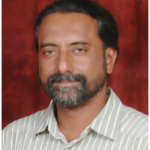 Tapan K. Chakravarty is an architect, urban designer and an educator. Presently he is Professor and Dean at Sushant School of Art & Architecture, Gurgaon, Haryana.
Tapan K. Chakravarty is an architect, urban designer and an educator. Presently he is Professor and Dean at Sushant School of Art & Architecture, Gurgaon, Haryana.
Previously he has been a Professor at Pearl Academy and the Head of Department of Interior Architecture & Product Design across four campuses; and has been Faculty, Mentor & Examiner at several Institutes of Architecture/Design in Delhi & NCR for over twenty-five years. Professionally engaged, since 1984, with a number of established Architecture/Urban Design firms in Delhi and organizations like UNDP and INTACH, besides having own practice till recently; he is now full-time in education.
AL: Architecture Profession has changed over the last decade. New technology, new materials and new skill sets have emerged and posed the new challenges for architecture education in India.
In your view, what steps should educators and architecture institutes shall take to prepare students to meet the expectations of the profession and the new challenges?
TC: Every/any profession experiences change and Architecture Profession is no different. Professional education needs to recognize these changes and evolve its curriculum & pedagogy in order to keep its currency with the times. Along with new technology, new materials and new skill sets; education also requires to recognize new or emerging context within which higher education finds itself today.
This process of change is a continuous one and can become a “challenge” only if change is not incorporated over a long period of time.
Architectural Education needs to shift out of the conventional content based curriculum and adopt a learning based philosophy that aims at capacity building in order to create the next generation of professionals who can adapt to continuous changes in the industry. This shall help overcome the perceived knowledge/skill redundancy and make a graduate a constant & consistent learner of new skills & knowledge.
AL: Teachers expect students to be creative and innovative, in what ways do you think even teachers can innovate and be creative within the framework of syllabus and guidelines provided by the Universities and the Council of Architecture?
TC: Architecture Education needs to move out of the ‘teacher centric’ approach to a ‘student centric’ approach; which will, by its own nature, insist creativity & innovation in both students & teachers. Teachers ought to be encouraged to become serious professional academics rather than amateurs at their work. This, amateur or part-time approach to teaching, is a hangover of the vocational pattern of education which has long outlived its utility and has restricted creativity & innovation.
Simultaneously_ the University systems should be advised to recognize the studio based & project oriented education and do away with the outdated question-paper & answer-copy type of examinations for assessment. This would encourage experimentation & exploration in the process of teaching & learning.
The CoA should also refrain from being over prescriptive in terms of content details, teaching time/hours and restricted teachers’ qualifications. CoA must encourage an education process that helps the graduating students to become more self-sufficient in terms of ones individual learning and self-development.
AL: You think modern architecture is losing its social conscience? If yes, how can institutes and educators make students aware of their social responsibility?
TC: Architectural Education needs to go beyond Architectural Literacy and imbibe in its curriculum both application and value systems for a graduating professional. The inherent difference between a profession and a trade, though mentioned in the CoA documents, needs to be clearly embedded in the education process itself.
The existing concepts of applied-art and applied-engineering as design methodology may need to be scrapped in favor of environmental & behavioral logic. Social Conscience will then become integral to practice.
AL: Please share your message for Architecture Educators.
TC: Education today is an industry by itself.
Major overhauling of the Architectural Education in the country is the need of the hour and it is possible once we get down to the first principles of an educational ideology.
It is time for introspection, reflection and consolidation.






